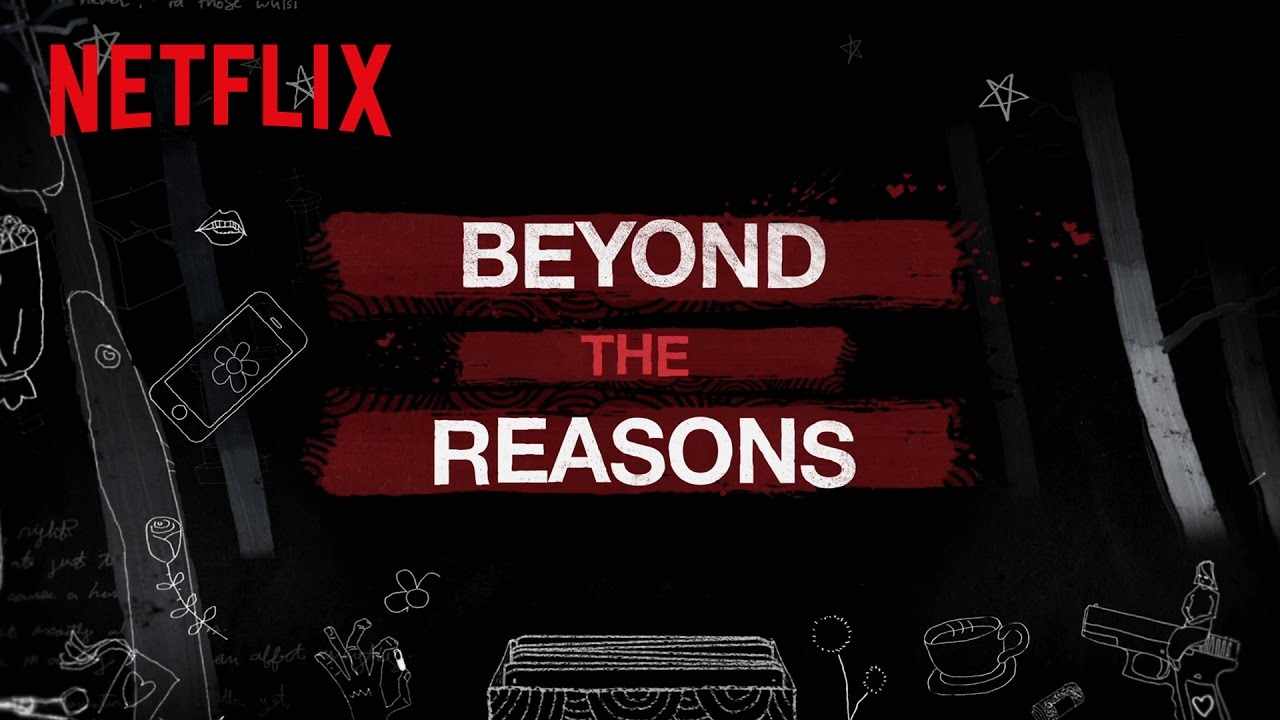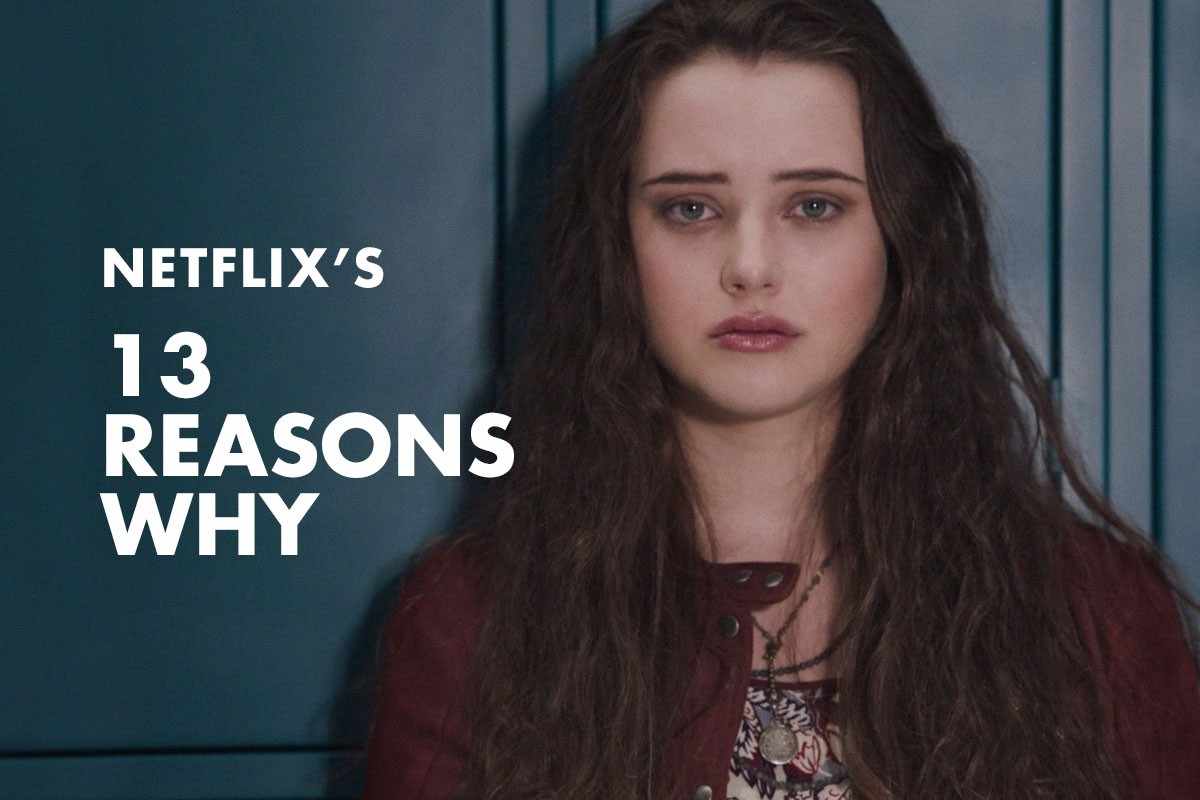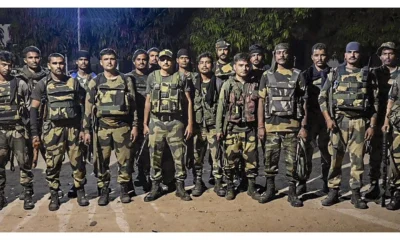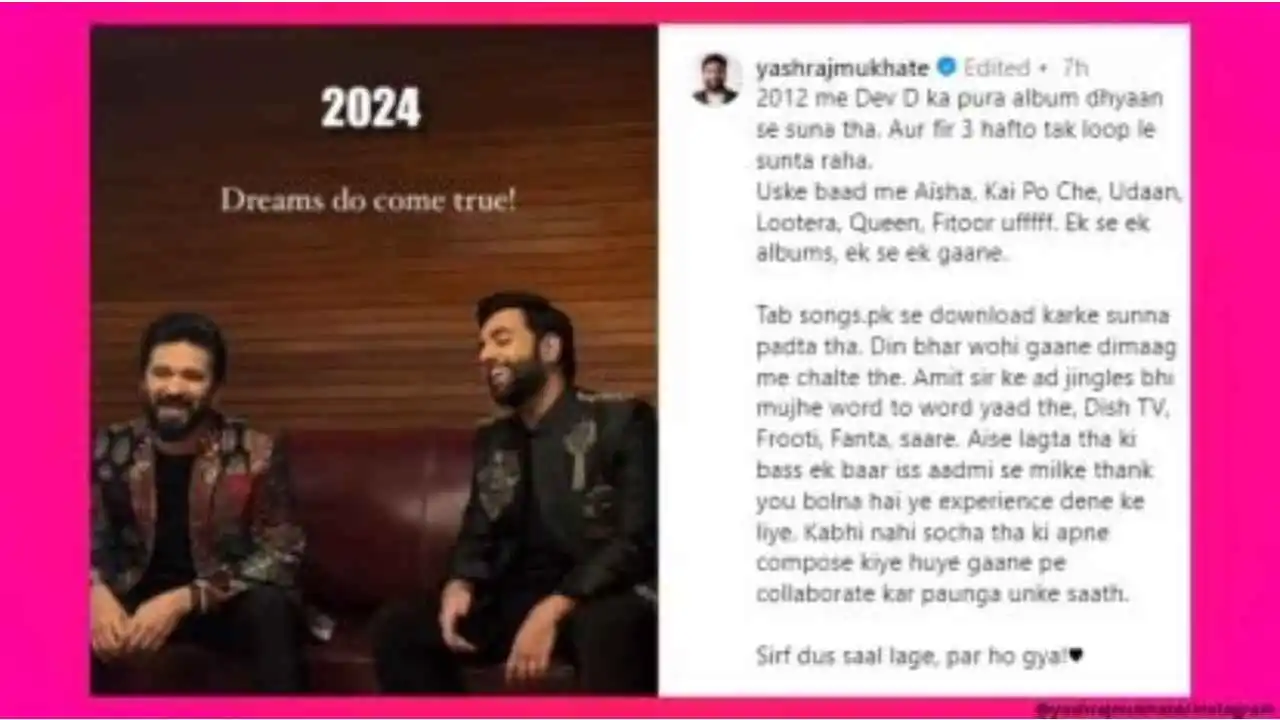[vc_row][vc_column][vc_column_text]Some say the US TV show of a similar nomenclature is a harmless work of fiction meant to entertain and it is not, repeat not, promoting a trend of copycat suicides. Not many guardians of teenagers believe that. Is there any basis to their fears? What are their arguments? A study
By Mrinal Verma
Since the worldwide release of Th1rteen R3asons Why on Netflix on March 31, 2017, it has become the most popular TV series. The US show, based on a novel of the same name by Jay Asher, narrates the story of Hannah Baker, a high school student who kills herself and leaves behind 13 tapes, one for every person in her life who purportedly drove her to take such an action.
The depiction of suicide onscreen has always been a sensitive issue, and those who portray it usually prefer to tiptoe around the subject. Yet, with the final episode’s gory scene of suicide, Th1rteen R3asons Why danced freely over those boundaries.
On June 5, 2017, Peruvian 23-year-old Franco Alonso Lazo Medrano killed himself by jumping from his high-rise apartment. He left behind tapes for the people whom he blamed for his suicide. The gesture had clearly been inspired by the TV series and it opened the floodgates of criticism on its creators.
And this week, families of two girls from the San Francisco Bay Area complained that their daughters committed suicide in April under influence of the teen drama.
ANGSTY AND ALLURING
The problem, sociologists say, lies in the motive of the series, based on the eponymous young adult novel written by Jay Asher and published in 2007. The aim, they allege, is not to highlight teenage issues, as it claims to do, but showcasing them in a way that will push up viewership and rake in revenue. The devil, they say, is in the details.
To begin with, is the form of the narrative and its treatment which, according to critics, are problematic.
In order to present an exciting and addictive show that will keep everyone hooked till the last minute, the story is presented as a mystery, and a blow-by-blow account of Hannah’s inexorable slide into depression ending in suicide through the route of bullying, slut-shaming and rape.
Every episode ends with the statement, “Hannah killed herself”, which silences everyone else, and seems to send out the idea that someone killing themselves is not an unfortunate event but a resounding reply to all events that preceded it.
The story, which is said to have started with her suicide, moves on from the subject five minutes into it, and is more focused on finding people to blame for it, may be, even deciding who shoulders the largest share of responsibility. The message that it presents at the end of the day is not that depressed people should get help and that suicide should be prevented, but that if you cannot get things to go your way when you are alive, you may just be able to do that after your death—by forcing people to privately accept their culpability (if someone refuses to listen to the tapes, she has posthumously threatened to have them released in the public domain). This not only inadvertently promotes suicide but also glamorises it.
As does the graphic portrayal of the act itself—with its massive audiovisual impact on the audience.
NOT A MAJOR INFLUENCE?
But, of course, the counter-argument to all of this is that the morbid, sordid, often-lurid and highly-sensationalist series is so full of melodrama and has such a weak storyline that its effect on audiences won’t be enduring. After all, the artistic quality of a work is one of the main determinants of the extent of its influence.
The graphic portrayal of the act itself may also work as a deterrent, according to some observers.
And if a person themselves is ultimately to blame for their own suicide, well then, we can’t really blame a show or a third party for it should it happen in all good conscience, can we? This is after factoring in both the existence of abetment and copycat suicides.
IRRESPONSIBLE BLAME GAME
Granted that abetment to suicide is a crime, these cases are argued painstakingly in court to establish guilt. The show blatantly ignores the fact that suicide is an action taken by one person and one person only. It promotes a kind of grievance/victim politics wherein the person at the receiving end automatically qualifies for sympathy and need not display valour or resilience or even integrity in the face of adversity, indeed prove herself.
And, its careless, really irresponsible, effort of shifting blame is highly questionable, especially as the show is mostly aimed at young adults and teenagers and can easily trigger similar behaviour in society.
After watching this show, people might end up cruelly blaming already-bereaved friends and family of a suicide victim, without adequate knowledge of their circumstances and very often baselessly and totally erroneously, driven by a shallow interpretation of the story and an overriding desire to behave like their favourite character(s).
For instance, in regressive societies, if someone takes this step after crumbling under peer or parental pressures or being otherwise unable to cope with wrongheaded expectations, it is their well-wisher or true friend who may turn out to be the unfortunate target.
One important character in the show is Clay Jensen, who was in unrequited love for Hannah. He is one of the people to receive the tapes (and hence share the blame), and who, throughout the series, pursues his own quest of justice for Hannah, or at least the justice he thought she deserved. This is, even as Hannah specifies that he is not meant to be on the tapes but is being included only as a witness. Because, if he truly isn’t, then the show is a misnomer.
NO MEANT YES?
Hannah and the others around Clay blame him for her death, claiming that his lack of romantic advances towards her contributed to it. This portrayal is an epitome of the glorified connection between depression and love. Clay’s famous line in the finale, “I cost a girl her life because I was afraid to love her”, might seem romantic and heartbreaking, but actually diminishes the very real struggles that a mentally ill person goes through. By claiming that Clay’s love could have cured Hannah is making light of a serious issue like depression that cannot be solved by someone just loving you back; it is a full-fledged illness which needs professional intervention.
Clay’s love, which he offered to Hannah at a party, was rejected when she orders him to leave her alone, but the show still blames him for causing her suicide, by suggesting that had he confessed his feelings for her, she would not have taken this step. Ever heard of the concept of show, not tell? This not only makes light of the issue of suicide, but seems to problematise consent. Or, one can say that it only highlights the very common fact that people so often do not know their own minds.
ONE GOOD REASON
But the one good reason why Th1rteen R3asons Why is problematic is, perhaps, not because it shows suicide or seeks to divert blame for it but because it reinforces the intrinsically misogynist and patently false notion that the effects of rape are always permanent and one cannot survive rape. To that extent, it is a part of a long literary tradition including works such as William Shakespeare’s The Rape of Lucrece.
Bryce’s rape of Hannah is shown as the final nail in the proverbial coffin for her and the trigger for her suicide. Till that point, the bullying, misbehaviour and resulting loneliness that Hannah faces are actually rather commonplace occurrences.
Since the malpractice of stigmatising rape victims still persist in many societies and, historically, has been present in all parts of the world, creating such a storyline is not only unimaginative but also insidious. It also makes one wonder about the state of feminism and whether America, once its flagbearer, is suffering the ill effects of globalisation in that it is succumbing to negative influences from other parts of the world.

COPYCAT SUICIDES
Contrary opinions notwithstanding, many psychologists opine that the visual presentation of Hannah killing herself is most possibly the biggest facet of it that the show gets wrong. But suicide is also a philosophical decision for some. At the same time, it can take the form of a social trend or fad.
The 1770 suicide of English poet Thomas Chatterton sparked some copycat suicides. Written around the same time, The Sorrows of Young Werther, a novel by German philosopher Johann Wolfgang von Goethe, climaxed with the suicide of its protagonist. There were reports of plenty of suicide cases that were triggered by it, with people trying to imitate the scene, so many of them that copycat suicides came to be known as the Werther effect. The publication of Albert Camus’ pathbreaking 1942 work, The Stranger aka The Outsider, too, saw a string of suicides, as its profoundly pessimistic interpretation of existentialism made readers ponder, why not die. Some of them responded in the affirmative to that question.
Indeed, while doing his research on Goethe’s novel and its effect, writer David Phillips found that the real life incidents of suicide rose in number after a well-publicised suicide. “Hearing about a suicide seems to make those who are vulnerable feel they have permission to do it,” he said of the social psychology of those that took the final plunge. On a more personal note, Camus wrote, in The Myth of Sisyphus, “There is but only one truly serious philosophical problem, and that is suicide.” Euthanasia and right-to-die advocates will identify with this one, and they believe that suicide is a serious personal decision and not necessarily a manifestation of group behaviour.
Their argument for suicide is usually a well-reasoned one.
But for those who see the act of suicide as some kind of frivolous, inherited madness, there is support, too. Copycat suicides have been noticed after celebrity suicides of Chinese actress Ruan Lingyu, Japanese musicians Yukiko Okada, Miyu Uehara, and Hide. The famous suicide of actress Marilyn Monroe inspired around 300 copycat suicides between 1948 and 1967.
LONG HISTORY
And suicide can also be inspired by mass psychology. Historically, there have been various cases of political suicides, and even suicide pacts. In 206 BC, the citizens of Astapa in Spain decided to kill themselves and burn the city with all its treasures to escape slaughter at the hands of Romans. In a similar fashion, after being defeated by the Romans while migrating in from Scandinavia, the womenfolk of the Teutons, numbering 300 in number, first slew their children and were next morning found dead in each other’s arms, having strangled one another.
Numantines (a group living on the Spanish coast) committing suicide and setting fire to the city in 133 BC after defeat to the Romans and the Sicarii Jewish community collectively committing suicide in AD 73 rather than surrender to the Romans are other examples.
In India, the practice of jauhar was carried out by Rajput women wherein they jumped into a pyre to preclude possible rape by Muslim invaders.
Germany, too, saw a wave of mass suicides during the final days of Nazi regime. Japan also has its own history of seppuku self-disemboweling ceremonies, harakiri and kamikaze warriors.
There is a long history of religiously-motivated suicides as well. Collectively, the sects, which advocate suicide as a road to salvation and believe in the imminent end of the world, are known as the Doomsday cults. The Montanists set themselves on fire in the eighth century. Closer to the times we live in, 918 people died in the Peoples Temple incident in 1978 led by Jim Jones, who announced it to be “an act of revolutionary suicide”. The series of mass suicides started by the Order of the Solar Temple in the mid-1990s accounted for 74 deaths. The 1997 mass suicide of the followers of the Heaven’s Gate cult led to 39 deaths.
Significantly, the book, The Copycat Effect: How the Media and Popular Culture Trigger the Mayhem in Tomorrow’s Headlines, by Loren L Coleman discusses the effect the media can have on people while reporting Doomsday cults.
In India, Jains practise santhara and the Hindus prayopavesana as a means to peaceful exit from samsara (the temporal world). Atheists and agnostics believe that the samadhi or trance that supposedly led to the demise of great spiritual figures such as Chaitanya Mahaprabhu and Swami Vivekananda is a form of voluntary self-murder that may be achieved through meditation.
The list could go on.
TEENS MOST VULNERABLE
Highlighting another fear of guardians whose kids like to watch Th1rteen R3asons Why is Dr Madelyn Gould’s research paper, Suicide Clusters: an Examination of Age-Specific Effects, which proves that the risk of copycat suicide is four times higher in young adults than in people belonging to any other age group. The study shows that a fictional character dealing with similar problems choosing suicide presents it as an option to the weak.
“When a vulnerable mind identifies with a suicide victim, he might choose the same fate, thinking, ‘well, maybe that’s a way out for me. I am experiencing that same pain, those same problems.’ It may just activate a suicidal thought in someone that has it in the back of their heads,” Gould explains.
Now, if the Werther effect is on one end of the psychological spectrum of copycat suicides, on the other end of it is the Papageno effect. Named after a lovelorn character, Papageno, from the 18th-century opera The Magic Flute, it is the effect that mass media can have by presenting non-suicide alternatives to crises. Papageno was contemplating suicide until others showed him a different way to resolve his problems.
Disappointingly, far from illustrating the Papageno effect, Th1rteen R3asons Why shows the suicide attempt of Hannah’s classmate and friend, Alex Standall, whom she had also blamed for her fate.
However, it must be noted that Th1rteen R3asons Why is not bound to codes of and guidelines pertaining to journalistic ethics, such as the Ofcom broadcasting regulations, for covering suicide being as it is a work of fiction.
OPINIONS AND RESPONSE
Even so, what has the young adult viewership to say of this popular show and its hypothetical ramifications?
Apoorva Wadhwa, a student of Master of Arts (Writing and Literature) at Deakin University, Australia, talking about copycat suicides that the show could promote, says: “I think it truly does run a high risk of triggering suicides, and that’s where the danger lies. There are diverse kinds of recipients and we can’t really control how somebody interprets it or if they choose to imitate it.”
Jasper Samuel Joshua, a bachelor’s student in Tamil Nadu, agrees. “It [the show] is a disgrace to everyone who has survived depression, bullying and heartbreak,” he says. “It glorifies suicide and blames the people around you for your decision.”
And, in a message of hope and resilience, students of Oxford High School in Michigan, US, have decided to use the concept of the show to prepare 13 Reasons Why Not, a 13-day school broadcast in which 13 teenagers share their stories. They are stories of resistance and struggle, survival and redemption against gay-bashing, bullying and various other forms of negative behaviour. One of the participants, Morgan Abbott, is the younger sister of Megan Abbott, a student of the same school who committed suicide. Talk about the Papageno effect! Given that Th1rteen R3asons Why has been renewed for a second season in May that is set to premiere in 2018, its makers surely have something to learn from it.
Written with inputs from Sucheta Dasgupta[/vc_column_text][/vc_column][/vc_row]


 India News23 hours ago
India News23 hours ago
 India News22 hours ago
India News22 hours ago
 India News23 hours ago
India News23 hours ago
 India News3 hours ago
India News3 hours ago
 India News2 hours ago
India News2 hours ago
 India News2 hours ago
India News2 hours ago
 Featured10 mins ago
Featured10 mins ago
 India News51 mins ago
India News51 mins ago



















